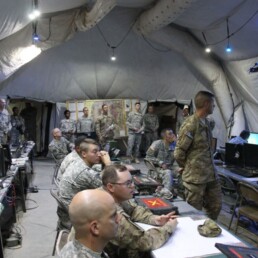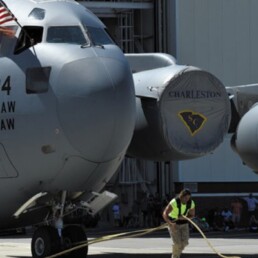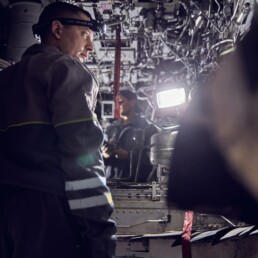Industries
Defense
Solving problems for material science, communications, weather prediction, informed decision making, resource allocation, maintenance and sustainment.
The Problem
Maintaining a technological and computational edge over our nation’s adversaries has never been more important to the defense industry, especially as other countries continue to invest heavily in quantum technologies.
The Quantum Trifecta™ Solution
Quantum computing offers a significant advantage by increasing the complexity and scale of calculations that help support our warfighters in carrying out their missions.
Material Science
Understanding electronic band structure is at the core of advancing our understanding of material science to develop novel materials and devices to assist our warfighters, such as with lighter weight ground vehicle armor and structures. While the molecules of most such materials are too complex to simulate on a classical computer, even modest sized quantum computing systems are well suited to simulate their electronic structure, enabling scientists to easily assess their useful properties.


Communications & Cryptography
Warfighters in the field are highly reliant on effective communication channels to succeed in their missions. Quantum communication networks can provide highly secure communication channels that are resilient to traceless tampering. They can also be used to connect many quantum devices together in a large network to perform functions that are beyond the scope of any single device.
Weather Prediction
Weather prediction models are highly complex models that project the evolution of dozens of interacting variables with extremely high resolutions, but the enormous computational load is one of the major factors that hampers the accuracy of these models. Quantum computing offers a more efficient means of processing the vast amounts of data needed for these tasks. In the short term, quantum optimization methods paired with machine learning methods can improve the accuracy of forecasts, ultimately improving operational awareness and strategic planning.


Informed Decision Making
The Quantum Trifecta™ can enable strategists in command and control centers to efficiently synthesize all available data while making mission-critical decisions. Machine learning and AI algorithms would perform data aggregation, data fusion, and algorithmic control tasks, while quantum computing would provide the heavy lift by solving segmented optimization tasks that would be updated in real-time as new data arrives from the battlefield. This combination of cutting-edge technology can give decision makers maximum insight into their data and tremendous flexibility while analyzing it.
Resource Allocation
Many applications of quantum computing focus on solving (NP hard) combinatorial problems such as the knapsack problem, where an objective must be maximized by distributing resources between recipients while subject to various constraints. In the near- and mid-term, quantum computing algorithms will solve these problems more efficiently than classical computers, especially when hybridized with classical control algorithms. This will help the DLA streamline logistic operations, saving millions of dollars; it will also help FEMA allocate and distribute available resources in the most effective manner in resource-scarce environments.


Maintenance and Sustainment
Large scale analyses of maintenance and sustainment protocols involve studying vast amounts of data and tweaking operational procedures in an attempt to elicit improvements in a process’s efficiency. The joint power of quantum computing and machine learning will enable organizations to quickly sift through mountains of data and perform these optimizations at scale.
